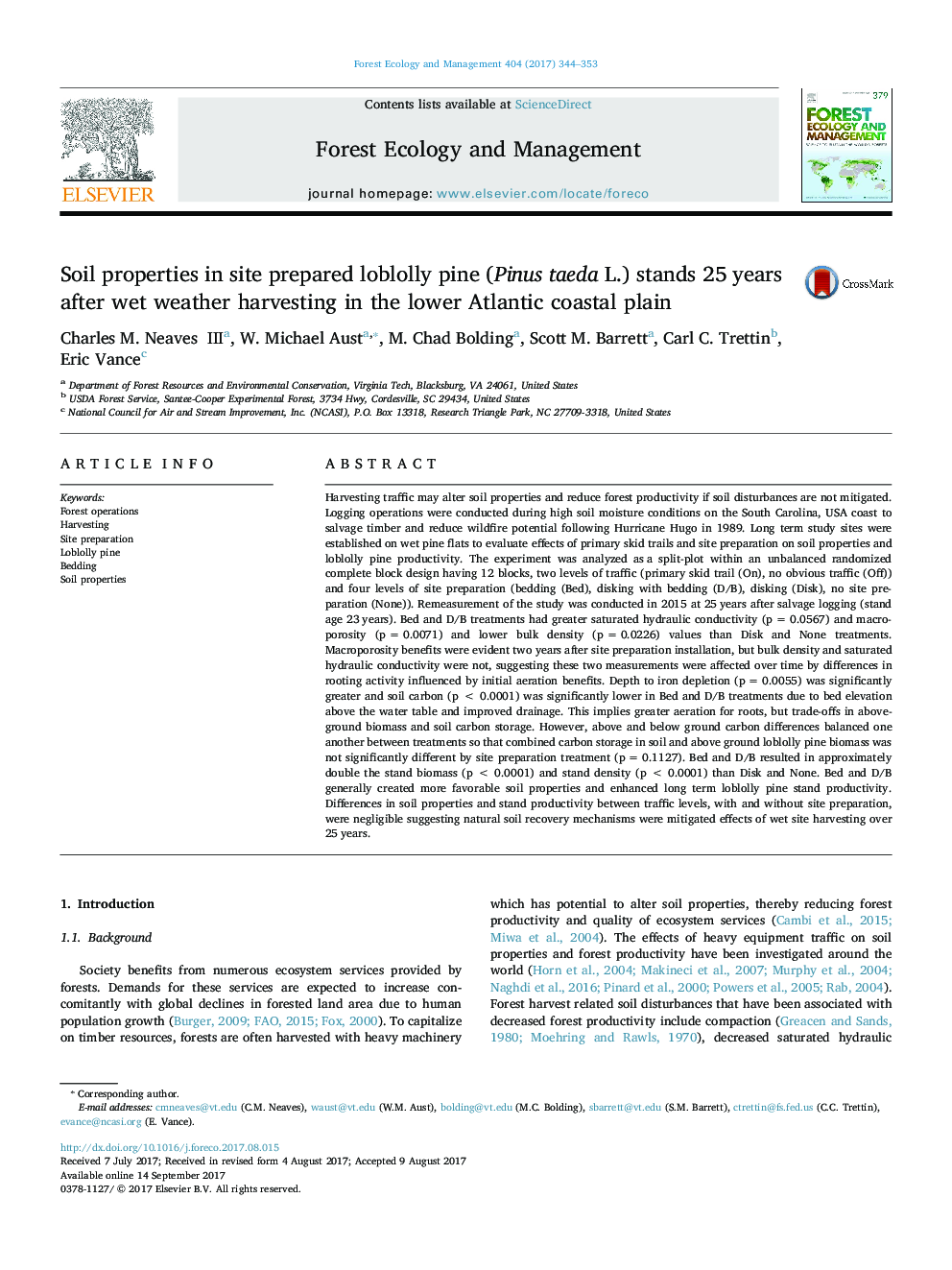| Article ID | Journal | Published Year | Pages | File Type |
|---|---|---|---|---|
| 6459187 | Forest Ecology and Management | 2017 | 10 Pages |
â¢Bed and Disking/Bedding treatments had improved soil properties relative to other treatments.â¢Bed and Disking/Bedding almost doubled stand biomass and stand density compared to Disk and None.â¢Natural soil recovery mechanisms also ameliorated harvesting effects.
Harvesting traffic may alter soil properties and reduce forest productivity if soil disturbances are not mitigated. Logging operations were conducted during high soil moisture conditions on the South Carolina, USA coast to salvage timber and reduce wildfire potential following Hurricane Hugo in 1989. Long term study sites were established on wet pine flats to evaluate effects of primary skid trails and site preparation on soil properties and loblolly pine productivity. The experiment was analyzed as a split-plot within an unbalanced randomized complete block design having 12 blocks, two levels of traffic (primary skid trail (On), no obvious traffic (Off)) and four levels of site preparation (bedding (Bed), disking with bedding (D/B), disking (Disk), no site preparation (None)). Remeasurement of the study was conducted in 2015 at 25 years after salvage logging (stand age 23 years). Bed and D/B treatments had greater saturated hydraulic conductivity (p = 0.0567) and macroporosity (p = 0.0071) and lower bulk density (p = 0.0226) values than Disk and None treatments. Macroporosity benefits were evident two years after site preparation installation, but bulk density and saturated hydraulic conductivity were not, suggesting these two measurements were affected over time by differences in rooting activity influenced by initial aeration benefits. Depth to iron depletion (p = 0.0055) was significantly greater and soil carbon (p < 0.0001) was significantly lower in Bed and D/B treatments due to bed elevation above the water table and improved drainage. This implies greater aeration for roots, but trade-offs in above-ground biomass and soil carbon storage. However, above and below ground carbon differences balanced one another between treatments so that combined carbon storage in soil and above ground loblolly pine biomass was not significantly different by site preparation treatment (p = 0.1127). Bed and D/B resulted in approximately double the stand biomass (p < 0.0001) and stand density (p < 0.0001) than Disk and None. Bed and D/B generally created more favorable soil properties and enhanced long term loblolly pine stand productivity. Differences in soil properties and stand productivity between traffic levels, with and without site preparation, were negligible suggesting natural soil recovery mechanisms were mitigated effects of wet site harvesting over 25 years.
